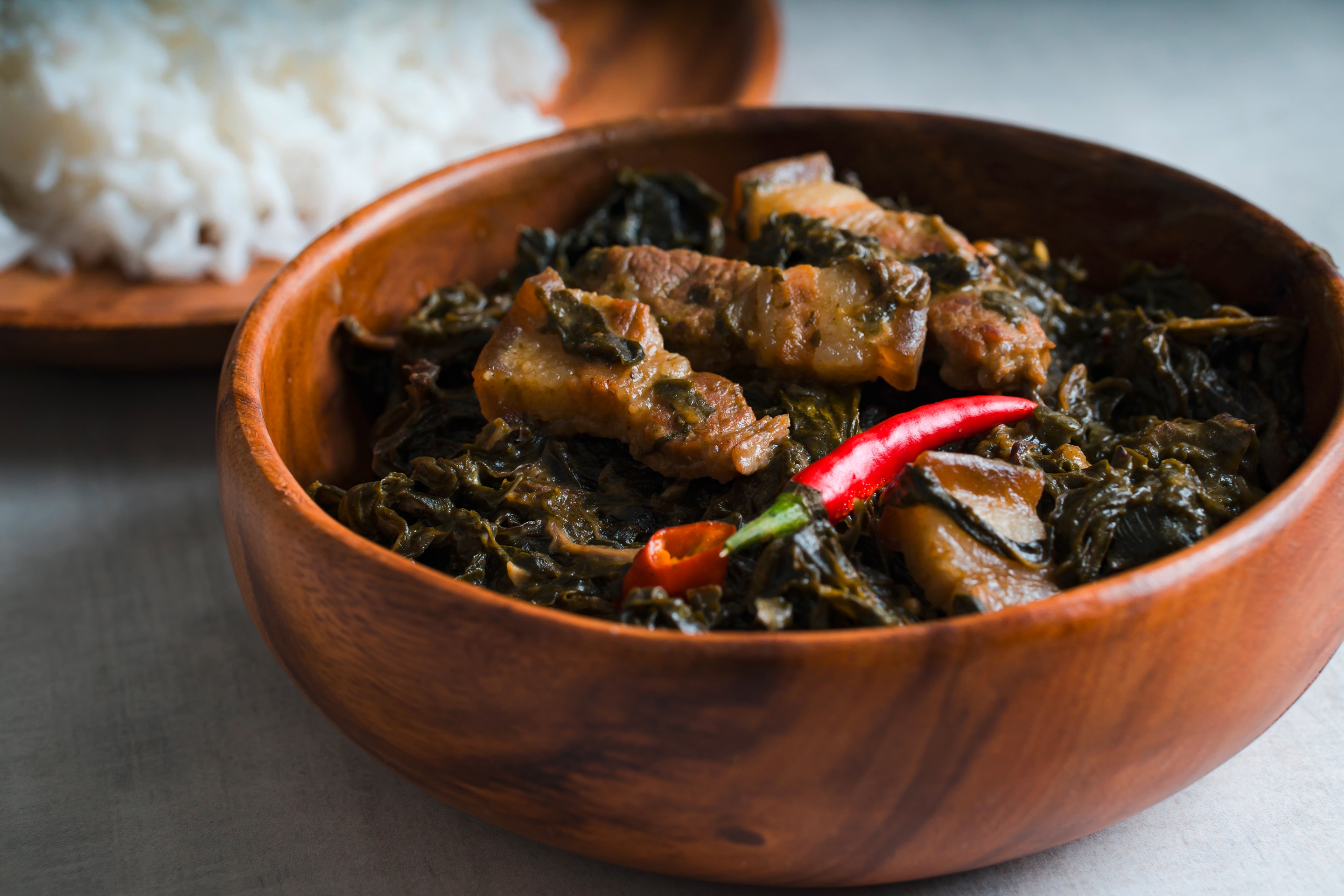Skip to:
Bicol Express exemplifies the best qualities of Bicol food. It’s mouthwateringly spicy, rich, and creamy, thanks to the foolproof combo of siling labuyo and gata. But as iconic as it is, this beloved ulam is only one of many must-try dishes from the region. If you want to familiarize yourself with Bicol food culture, it’s time to embrace not-so-familiar fare. Start with these five!
5 Must-Try Bicol Food You Can Make at Home

You’ll love the food in Bicol if you enjoy local produce, nose-to-tail eating, and chilies – lots and lots of chilies. Can’t wait for your next food trip? Whip up a Bicolano feast at home!
1. Laing

Laing is another famous food from Bicol. It primarily involves simmered gabi (taro) leaves, coconut milk, aromatics, and flavor enhancers like bagoong alamang (shrimp paste). You can make your version more substantial with sliced pork and flaked fish, but it works as a purely vegetarian dish, too. Speed up the cooking process without sacrificing taste with Knorr Ginataang Gulay Mix. The packet will add just the right amount of umami to your laing.
Bicolanos have another style of laing called “pinangat,” where gabi leaves double as a wrap for the other ingredients. Pinangat is another way of exploring a similar flavor. For an even more creative method, try laing pizza: it merges the comfort of the Bicol delicacy with the convenience of the merienda staple.
2. Pancit Bato
Pancit Bato originates from the municipality of Bato, Camarines Sur. Some might call it Bicol’s answer to the fiesta favorite pancit canton. It uses similar mix-ins: proteins like shrimp and pork, local veggies, and essential seasonings, such as soy sauce or patis (fish sauce).
But unlike the standard canton, pancit Bato features thick, heat-dried noodles with a firmer texture. Some Bato noodles bear a subtle smokiness since they dry with the help of firewood. These unique qualities make them even more satisfying to slurp up, especially if you prefer noodles with a distinct bite. Less room for sogginess here!
3. Kinalas

Are you craving a hearty bowl of beef noodle soup? Ditch your usual pares order for homemade kinalas. The Naga City specialty has all the classic fixings: melt-in-your-mouth meat, a silky broth, and noodles that absorb tons of flavor. But one addition levels it up: the gravy.
To make a traditional kinalas brown sauce, you’ll need pork or beef brains for richness and linamnam. But if that’s not to your tastes, use diluted cornstarch and umami-filled staples like broth cubes, patis, and soy sauce to achieve the same effect. Once all the components are ready, fix yourself a bowl with everything (don’t forget the garnishes!) and tuck in.
4. Kandingga
Kandingga is essentially Bicolano-style bopis. It calls for pork offal or organ meats, such as the heart, lungs, and spleen. Bopis can be dry or saucy depending on how you cook it, while kandingga has a creamy base of coconut milk and/or cream. Both dishes are spicy, zesty, and incredibly rich. Enjoy it as ulam with freshly steamed rice or as bar chow with an ice-cold beer.
Like bopis, a well-made kandingga is a prime example of Filipinos’ mastery of nose-to-tail cooking. The dish requires more care than your average stew to neutralize the smell and tenderize the organs. But if you’re an adventurous home cook who wants to try out regional cuisine, this is a worthy challenge to take on.
5. Biniribid
Biniribid is a type of sweet kakanin and fried doughnut (shakoy) from Bicol. You’ll find it in markets and street food stalls all over the region. Biniribid translates to “twisted,” which refers to its playful rope-like shape. The dough consists of coconut milk and rice flour, giving the doughnut a chewy consistency that sets it apart from similar treats. Some vendors sprinkle it with sugar, while others douse it in a thick glaze that hardens into a crunchy caramel.
Try making any of these dishes at home to gain a deeper appreciation for the uniqueness of Bicol food. Any of these could be your family’s new favorite meal!

